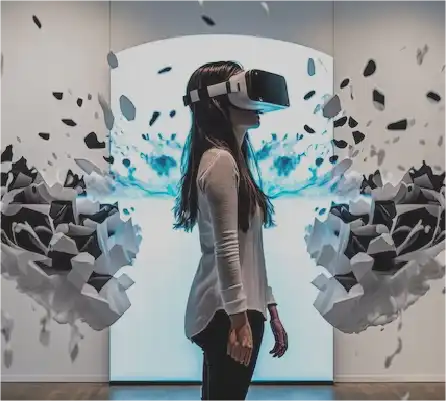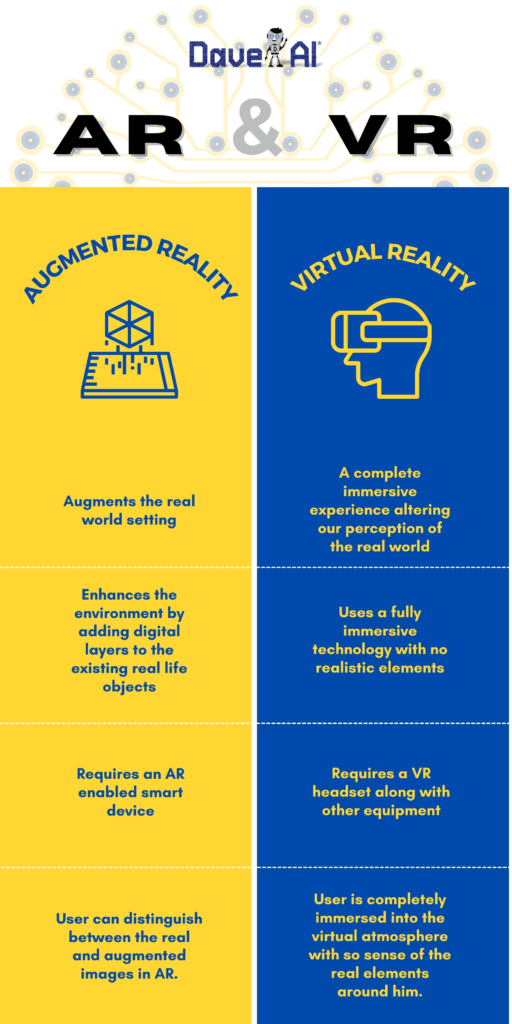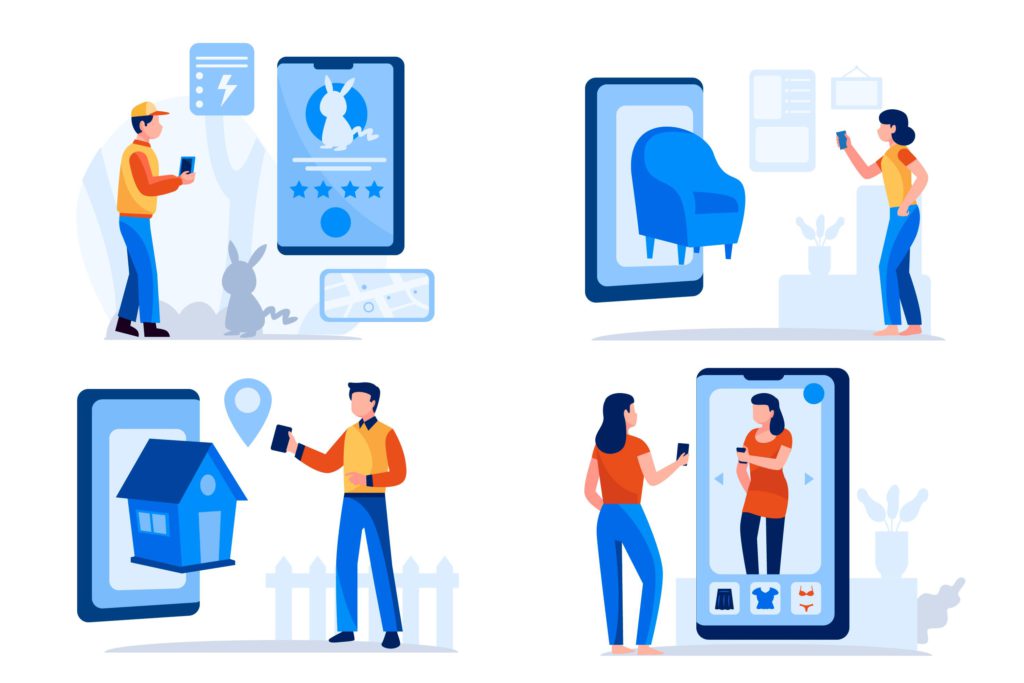Project Management
AR & VR Driving the Fashion Industry
- Surya Vamsi
- August 2, 2021

“Great Brand experiences come from compelling content and seamlessly integrated tech“ – This phrase summarizes the entire market scenarios of the fashion industry. The companies and brands coupled with e-commerce are continually exploring the impeccable horizons of integrating new technologies at various customer points to not only augment the customer experience but also optimize the effectiveness and to gain a competitive edge over the others.
The fashion industry is nesting on the advantages of Augmented and Virtual reality to enhance the comfort and experience for the customers. While this is a marathon in terms of the complete shift of industry, it will be an err not to acknowledge the gradual shift happening. To comprehend the limitless potential these technologies offer, understanding their attributes and differences will help get a better picture of the applications.
AR vs VR?
Augmented Reality is an interaction with the outside world through a smart device wherein the real objects and settings in the world are enhanced by computer-perceived images or perceptions.
Virtual Reality is a super immersive technology wherein real-life objects are superimposed into an artificial setting through the use of digital sensory elements like sound etc.

How can AR/VR be relevant in the fashion industry?
Fashion is one such industry predominantly led by the looks and perceptions of individuals. Bettering these factors can have an augmenting effect on the overall industry in varying magnitudes. While AR/VR has different methods of interaction and integration with the surroundings and requires different equipment, they primarily augment the visual and audible environment of the user providing an immersive experience. This capability of technology can play a strong hand in the fashion industry providing a revolutionary upgrade on both the customers and business front.

How can AR/VR upgrade shopping?
While most of us prefer online shopping over conventional in-store shopping to save time and effort, there exists a downside when we consider the product matching or quality and size fits. AR/VR can help solve this limitation by reconfiguring the display allowing us to view the product in real-time and customize it as preferred. The same capabilities can also be employed in physical stores to provide a better experience to the customers. The amalgamation of these two routes of fashion with a primary goal of augmented experienced gave rise to the term- ‘Digital Fashion’.
How can AR/VR help the fashion industry?
– Rate of product returns – Both primary as well as secondary research sources conveys that the major cause of the return of fashion products is because of a misfit in terms of size or quality. If the retailer receives the product back in an ideal state if not already damaged, he/she should still incur the cost of freight or shipping not once but twice. Augmented and virtual reality on the other hand can provide a close-to-real life 3D imagery of the fashion product thereby helping the customers make a better choice
– Cost reduction – VR and AR technologies can create a completely enlarged environment within a limited space thereby helping save cost for the brand. Furthermore, organizing a virtual fashion tour or virtual show can save a fortune for a company rather than an actual physical show. Customers can also have a sophisticated experience choosing their product through the virtual show and purchasing it online or offline.

– Customer Experience – AR/VR solutions are quite often fascinating to the users because of their immersive capabilities. Customers are often awed by the latest solutions offered by VR/AR and are willing to explore them. This results in better customer engagement. This coupled with the sophisticated buying and trying out options helps augment the overall customer experience both online as well as offline.
– Customer retention – A positive experience generated by these solutions will empower the store with a customer base which is not only impressed by the leaps of technology, but also appreciates the sophistication provided thereby re-visiting the brand for future purchases.
– Data Analytics – AR/VR solutions when powered with AI, can have the capability to interpret the responses of the individuals interacting with them and analyze the key points that are engaging the customers and those that aren’t. This information can be used by the brands to concentrate on the engaging factors and to catch up on the lagging factors.
Application of AR/VR in fashion sectors
Beauty
AR/VR has provided a solid offer the beauty sector cant refuse. Many of the beauty stores usually are adamant to maintain a tester set for all the beauty products including lipstick shades etc. Furthermore, there is no possibility to provide a tester when the products are being purchased online. With the use of AR mirrors and Virtual mirrors, customers can try out the different shades and colors of the products available without the necessity of any physical product. This would save costs for the store and at the same time, help customers pick the right choice in an easy way.
Beauty products giant L’Oreal has collaborated with Facebook post it’s acquisition of an AR make up app Modiface, to enable the users try out the make up products using the Facebook’s camera.
Apparel’s and Jewelry
Apparel’s and jewelry sector are also no excuses to leverage the advantages of these technologies. They are extensively integrating these upgrades to provide a stress-free and uncrowded shopping experience to the users. With the use of AR/VR technologies, users can shop at the comfort of their homes instead of visiting the actual stores during the season of sales when its usually over-crowded. The stores on the other hand need not to maintain a mounting inventory at all the outlets. Jewelry sector can with the use of virtual mirror, offer the customers the chance to try out their specific jewelry even before it’s completed in order to assure accuracy and precision.
Zara, the spanish retailer owned by Inditex, has introduced augmented reality displays in it’s stores as an attempt to lure the millennials. The AR showcases models wearing the ranging collection offered in Zara when the camera is held up to a sensor placed in the store or at designated places.
Eyewear
While eye wear is a form of corrective measure, the majority of products these days include both corrective as well as aesthetic aspects. While a major base of customers go to the physical store for purchases, a significant amount of users prefer online purchases as well. In the case of instore purchases, the customers can only be given a skeletal and a sample trail of the frame with standard measurements. However, with the use of virtual mirrors and AR solutions, users can try out the accurate fit of the frame and glasses precise to their facial features. Customers shopping online can also try out the products seamlessly with the use of these technologies.
Lenskart, one of the leading eye wear retail, has integrated Augmented reality into its application to enable the users try out a 3D view of their face withe the glasses on using the in-app camera feature.
Popular fashion brands using AR/VR
AR/VR has an established standing in the retail sector. It’s branches are widespread into many of the sectors and fashion industry is no excuse.
Gucci
The italian fashion company and a renowned manufacture of luxury goods Gucci has integrated an AR feature into its app to let the users try out the sneaker collections. The users had to point out the mobile camera towards their feet to try out the catalogue available.
H&M
H&M has focused on augmenting the experience by combining the augmented reality along with the possibility of facebook sharing. Users can interact and click pictures with H&M virtual apparel and fashion. They can swipe through the collections and can capture the snaps which can also be shared on facebook. Users of instagram can also use these filters to create their own version of a music video to share with friends and followers as a part of the campaign.
Amazon
E-commerce giant Amazon has chosen London as its playground to introduce a hair salon with an AR color bar which allows customers to try out the hair colors virtually and products on their hair before purchasing them. The AR uses a tablet embedded into the store’s mirror which allows the users to try out different shades of the products available.
AR/VR has countless advantages and applications in the fashion industry owing to its ever flexible trends. With the emerging market allowing the sophistication of customer interaction, brands can augment the experience and provide products to the customers at a more optimal price. Thanks to the reduced input costs due to automation, customers can now experience the technology of future at lower prices and a faster and more sophisticated form of shopping.
